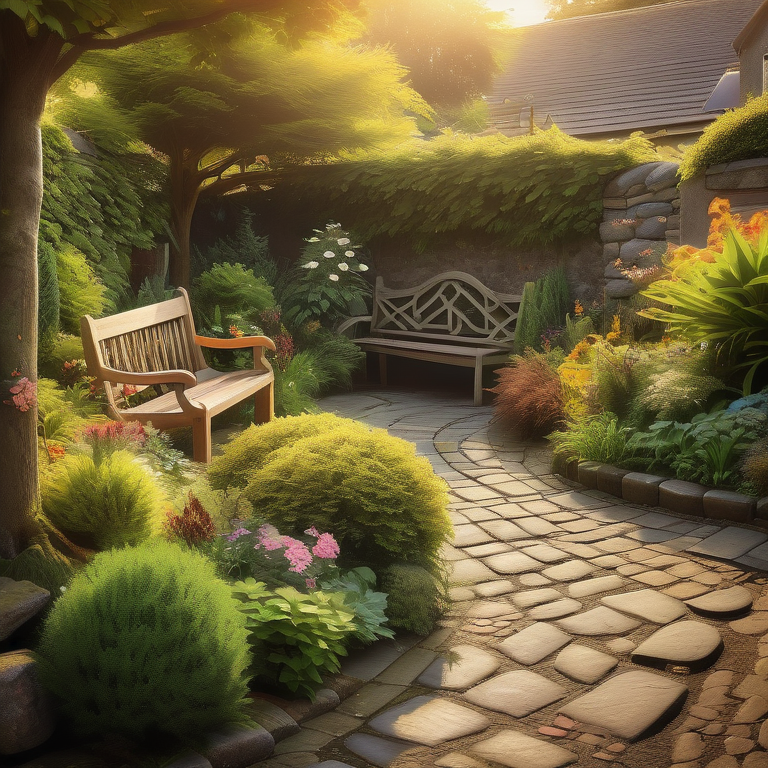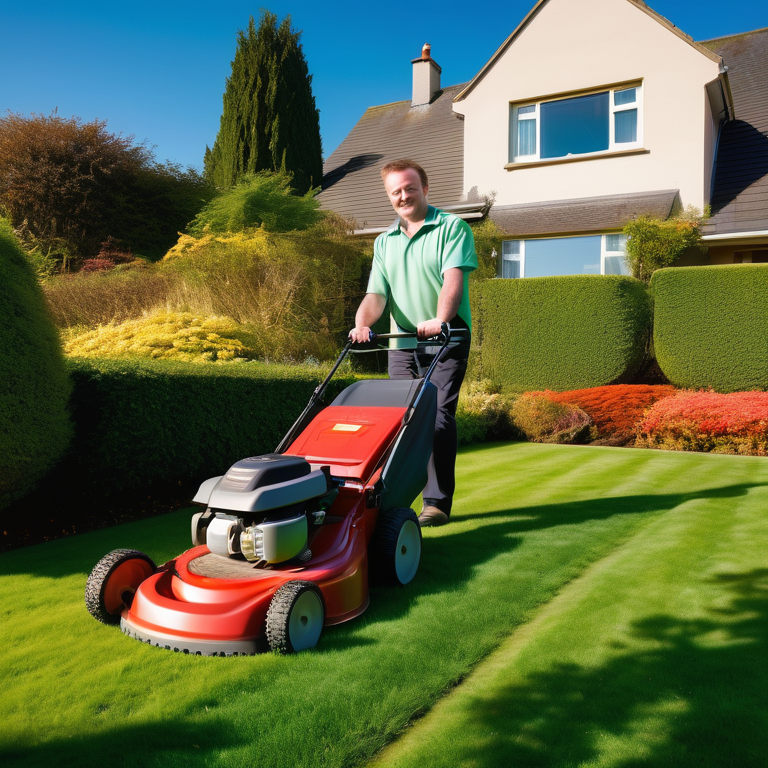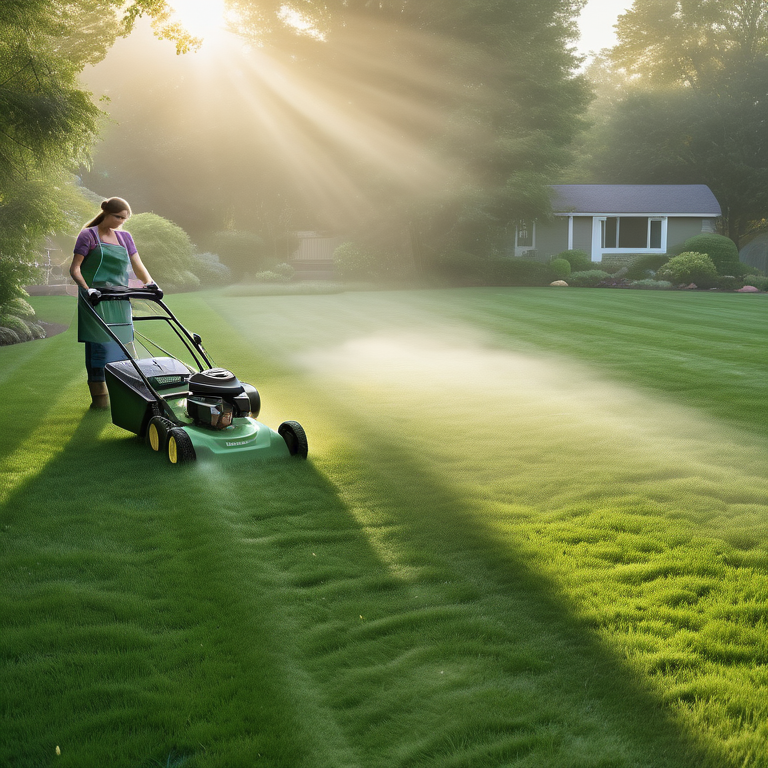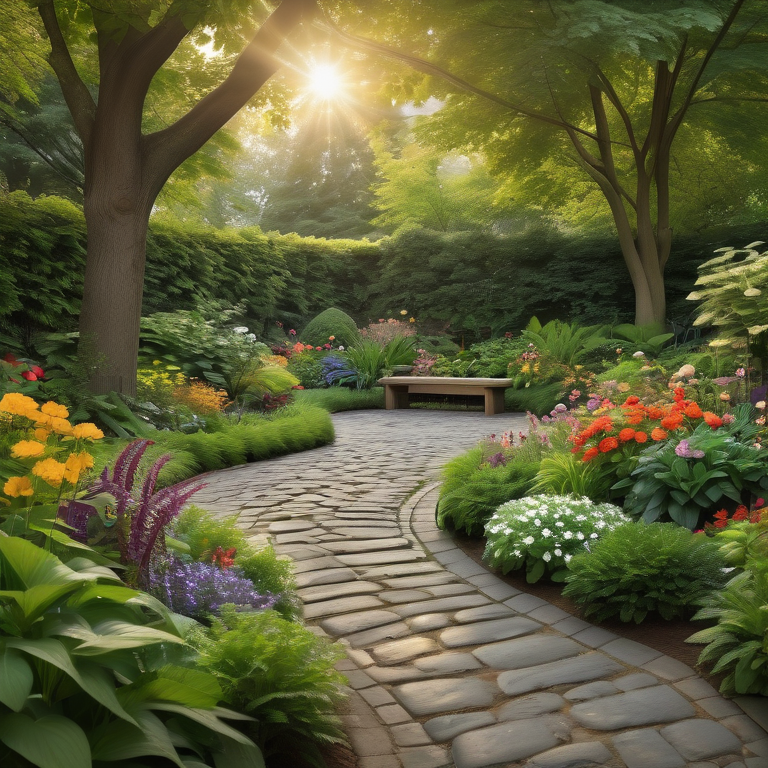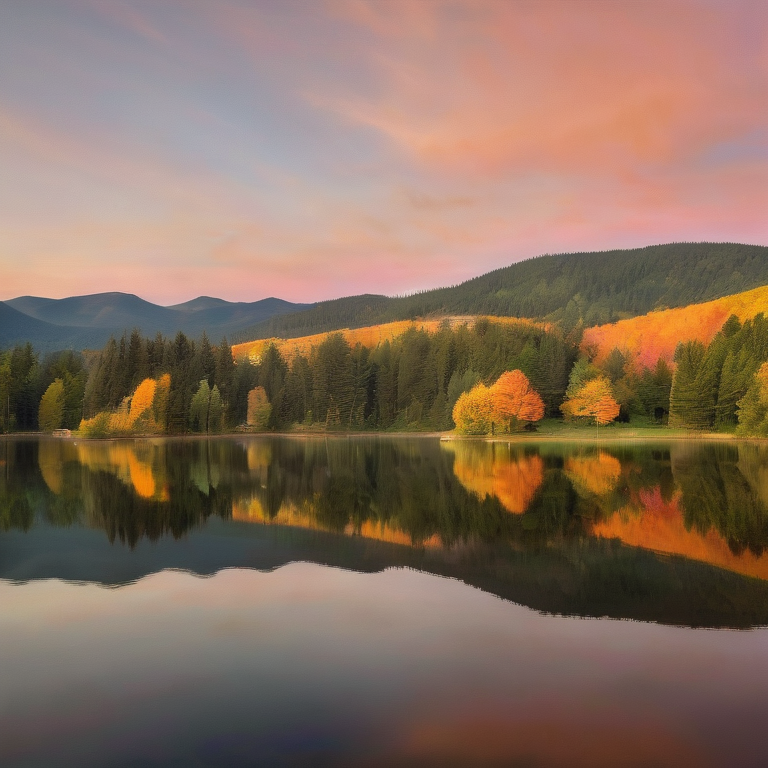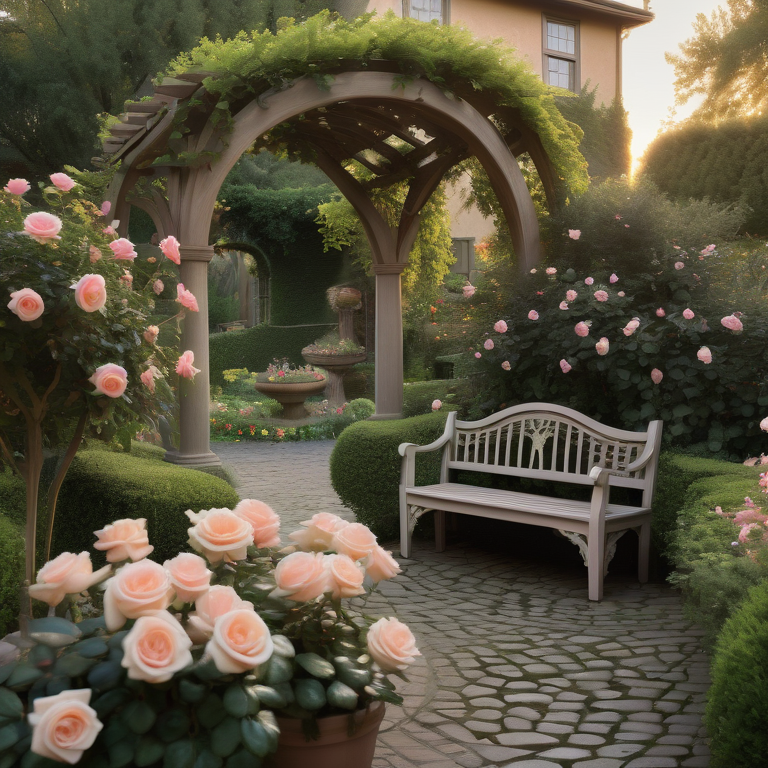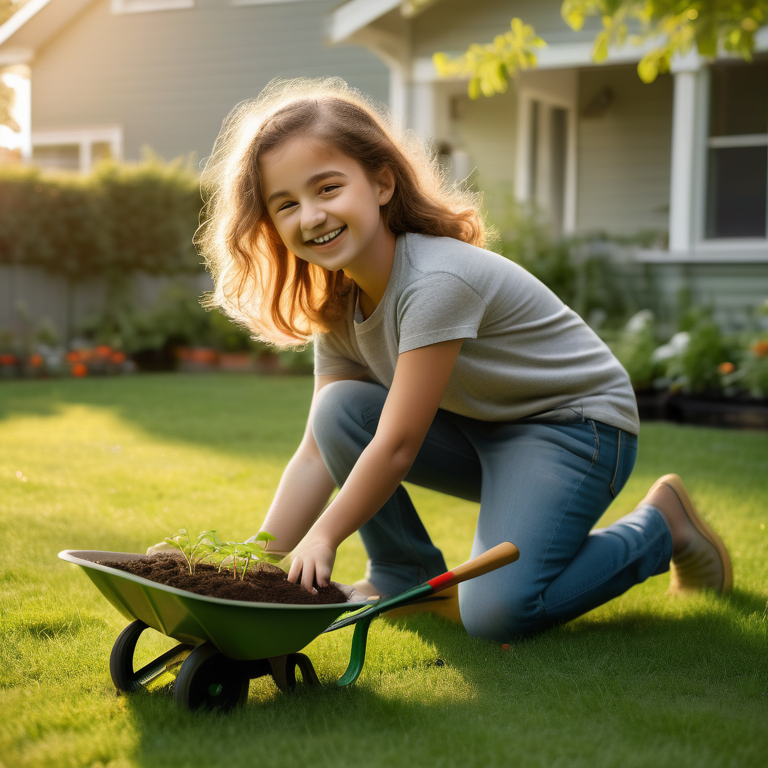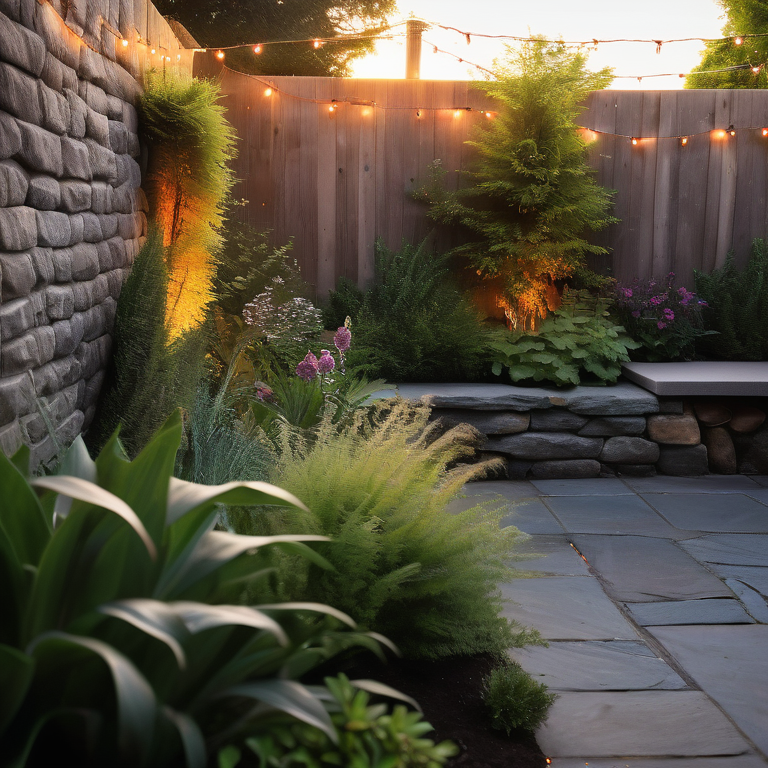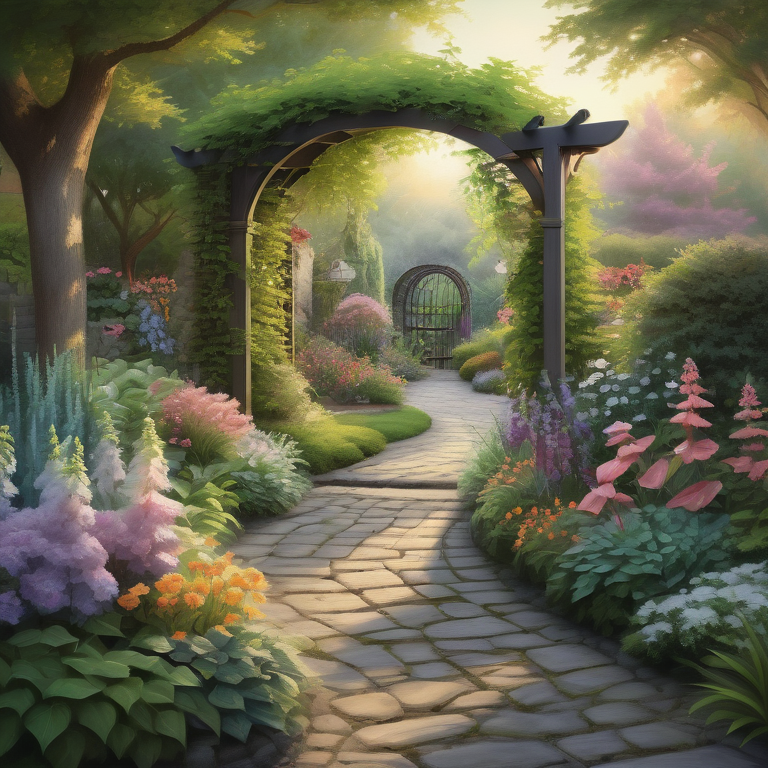Key Highlights
- Understanding the importance of maximizing space in small gardens
- Key considerations Wicklow’s climate soil in garden design
- The initial steps in planning your small garden project
- Design elements to incorporate in small gardens
- Practical tips for maintaining a successful small garden
- Innovative solutions for common challenges in small garden design
Introduction
Welcome to the ultimate guide to small garden design in Wicklow! Whether you have a tiny backyard or a compact balcony, this guide will provide you with all the information you need to create a beautiful and functional outdoor space. Wicklow, known as the “Garden of Ireland,” is the perfect backdrop for designing small gardens that make a big impact. With our expertise in landscaping and design, we have worked on garden design and landscaping projects for clients all over Dublin, Wicklow, Kildare, Carlow, and Wexford.
Creating a small garden in Wicklow requires careful planning and consideration. In this guide, we will explore the key highlights, understanding small garden design in Wicklow, the importance of maximizing space, key considerations for Wicklow’s climate and soil, the initial steps in planning your small garden, design elements for small gardens, practical tips for small garden success, and innovative solutions for common challenges. We will also showcase case studies of successful small gardens in Wicklow.
Whether you are a seasoned gardener or a beginner, this guide will provide you with valuable insights and expert advice to help you create a small garden that is both beautiful and functional. So, let’s dive in and discover the secrets of small garden design in Wicklow!
Understanding Small Garden Design in Wicklow
When it comes to small garden design in Wicklow, there are a few key factors to consider. First and foremost, it’s important to understand that designing a small garden requires a different approach compared to larger spaces. The limited size of the garden means that every element must be carefully planned and thought out to make the most of the available space.
In Wicklow, the beauty of the surrounding landscape provides an excellent backdrop for small gardens. The lush greenery and stunning views can be incorporated into the design to create a seamless transition between the garden and its surroundings. www.wicklowlandscaping.ie
The Importance of Maximizing Space
One of the key challenges of designing a small garden is maximizing the available space. In Wicklow, where space is often limited, this becomes even more important. By making the most of every inch, you can create an outdoor living space that is both functional and visually appealing.
One way to maximize space in a small garden is to design multi-functional areas. For example, a seating area can double as a storage space by incorporating built-in benches with hidden storage compartments. Vertical gardening techniques, such as using trellises and hanging baskets, can also help maximize space by utilizing the vertical dimension of the garden.
In terms of landscape design, creating different levels and using varying textures can give the illusion of more space. By incorporating elements such as raised beds, terraces, and pathways, you can create a sense of depth and dimension in the garden.
Key Considerations for Wicklow’s Climate and Soil
When designing a small garden in Wicklow, it’s important to consider the unique climate and soil conditions of the region. The soil quality in Wicklow can vary, with some areas having acidic soil and others having alkaline soil. Before planting, it’s essential to test the soil and amend it accordingly to ensure optimal plant growth.
In terms of climate, Wicklow experiences a mild, temperate climate with abundant rainfall. This provides ideal conditions for a wide variety of plants, but it’s important to choose plants that are well-suited to the local climate. Drought-tolerant plants, such as lavender and sedum, can be a good choice for small gardens in Wicklow.
Additionally, considering the microclimates within your garden can help create optimal growing conditions for different plants. For example, areas that receive full sun can be reserved for sun-loving plants, while shaded areas can be planted with shade-tolerant species. www.wicklowlandscaping.ie
Initial Steps in Planning Your Small Garden
Before diving into the design process, it’s important to take some initial steps in planning your small garden project. First, define your goals and objectives for the garden. Are you looking to create a peaceful retreat, a vibrant entertaining space, or a functional vegetable garden? Understanding your goals will guide the design process, including decisions about paving and other hard landscaping elements. Additionally, it’s important to consult with a professional like Vyvian White, director of Lotus Landscape Design, for expert guidance and services in garden design and landscaping.
Next, consider hiring a professional landscape gardener if you feel overwhelmed or are unsure how to proceed. A landscape gardener can provide valuable insights and expertise to ensure your small garden design is successful.
Finally, make a plan for your garden project. Create a sketch or use a garden design software to visualize your ideas. Consider the layout, flow, and focal points of the garden to create a cohesive and harmonious design. www.wicklowlandscaping.ie
Assessing Your Garden’s Potential
Before implementing your small garden design, it’s important to assess the potential of your garden space. Take a walk around the area and observe the existing features, including plants, structures, and views. Consider how these elements can be incorporated into your design.
Next, evaluate the site conditions, such as sun exposure, soil quality, and drainage. This information will help you determine which plants and design elements will thrive in your garden.
Additionally, consider the size and shape of your garden. Are there any limitations or challenges that need to be addressed? For example, if you have a narrow garden, you may need to incorporate vertical gardening techniques to maximize space.
By assessing your garden’s potential, you can make informed decisions and create a design that is tailored to your specific site.
Setting Realistic Goals and Budgets
Setting realistic goals and budgets is an essential step in small garden design. Consider your available resources, both in terms of time and money, and set a budget that aligns with your goals.
When setting goals, be realistic about the amount of time and effort you can dedicate to garden maintenance. If you have a busy schedule or limited gardening experience, it may be best to opt for low-maintenance plants and design elements.
Additionally, consider the long-term costs of garden maintenance. Factor in expenses such as watering, fertilizing, and pruning when creating your budget.
By setting realistic goals and budgets, you can ensure that your small garden design is not only visually appealing but also sustainable and manageable for years to come. www.wicklowlandscaping.ie
Design Elements for Small Gardens
When it comes to small garden design, there are several design elements that can make a big impact. Working with a garden designer can help you incorporate these elements seamlessly into your design.
First, consider creating focal points in your garden. These can be achieved through the use of eye-catching plants, sculptures, or water features.
Second, incorporate different textures and materials to add visual interest. Use a mix of hardscape materials, such as stone, wood, and gravel, to create texture and contrast in the garden.
Finally, consider the use of color in your design. Bright, vibrant colors can create a sense of energy and excitement, while cool, muted tones can evoke a tranquil atmosphere.
By incorporating these design elements, you can create a small garden that is visually appealing and inviting.
Choosing the Right Plants for Small Spaces
Choosing the right plants is crucial for the success of a small garden design. In small spaces, it’s important to select plants that are well-suited to the available space and growing conditions.
Consider using compact or dwarf varieties of plants that won’t outgrow their designated areas. This will help prevent overcrowding and ensure that all plants have enough space to thrive.
Incorporate a mix of evergreen and seasonal plants to provide year-round interest in the garden. Evergreen plants, such as boxwood or lavender, provide structure and greenery even during the winter months.
Additionally, consider the growing requirements of the plants, such as sun exposure, water needs, and soil conditions. Choose plants that are well-suited to the specific conditions of your garden to ensure their success.
Incorporating Vertical Gardening Techniques
In small gardens, space-saving techniques such as vertical gardening can be a game-changer. By utilizing vertical space, you can maximize the available growing area and add visual interest to your garden. Here are some ideas for incorporating vertical gardening techniques:
- Install trellises or arbors to support climbing plants such as roses or clematis.
- Hang baskets or planters on walls or fences to create a vertical garden.
- Use a living wall or vertical planter system to grow herbs, lettuce, or other edible plants.
- Create a vertical garden using stacked pallets or shelves.
By incorporating these vertical gardening techniques, you can make the most of your small garden space and create a lush, thriving garden. www.wicklowlandscaping.ie
Utilizing Color and Texture to Enhance Visual Space
Color and texture play a crucial role in small garden design, as they can visually enhance the space and create a sense of depth. Here are some tips for utilizing color and texture in your small garden:
- Use a mix of contrasting colors to create visual interest. For example, pair warm colors like red and orange with cool colors like blue and purple.
- Incorporate plants with different foliage textures, such as grasses, ferns, and succulents. This will add visual depth to the garden.
- Create focal points with brightly colored flowers or unique plant varieties.
- Use hardscape materials with textures that complement the surrounding plants.
By carefully selecting and combining colors and textures, you can create a visually stunning small garden that feels much larger than it actually is.
Practical Tips for Small Garden Success
Maintaining a small garden requires careful planning and regular maintenance. Here are some practical tips for small garden success:
- Plan for regular watering, especially during dry spells, to ensure the health of your plants.
- Prune and trim plants regularly to maintain their shape and prevent overcrowding.
- Control weeds by using mulch or ground cover plants.
- Monitor pests and diseases and take appropriate action to prevent damage.
- Invest in quality tools and equipment to make garden maintenance easier.
By following these practical tips, you can ensure that your small garden remains healthy and beautiful throughout the year. www.wicklowlandscaping.ie
Efficient Use of Water in Small Gardens
In small gardens, efficient use of water is essential. Here are some tips for incorporating water-saving features into your garden design:
- Install a rainwater harvesting system to collect and store rainwater for watering your plants.
- Use water-efficient irrigation systems, such as drip irrigation, to minimize water waste.
- Incorporate water-saving features, such as self-watering containers or sub-irrigation systems.
- Choose drought-tolerant plants that require less water.
- Design a water feature, such as a small pond or fountain, that recycles water to minimize water usage.
By implementing these water-saving strategies, you can create a sustainable and eco-friendly small garden.
Maintenance Tips to Keep Your Garden Thriving
Maintaining a small garden requires ongoing care and attention. Here are some maintenance tips to keep your garden thriving:
- Regularly water your plants, especially during dry spells, to ensure they receive adequate moisture.
- Prune and trim plants as needed to maintain their shape and promote healthy growth.
- Remove weeds promptly to prevent competition for nutrients and water.
- Fertilize your plants regularly to provide necessary nutrients.
- Monitor for pests and diseases and take appropriate action to prevent damage.
Remember that maintaining a garden requires consistent effort and hard work. By staying on top of maintenance tasks, you can enjoy a beautiful and thriving small garden.
Innovative Solutions for Common Challenges
Designing a small garden comes with its own set of challenges. Here are some innovative solutions to common challenges in small garden design:
- Overcoming limited light conditions by choosing shade-tolerant plants and incorporating lighting features.
- Finding solutions for poor soil quality through soil amendment and raised bed gardening.
- Maximizing space by using vertical gardening techniques and multi-functional design elements.
By thinking outside the box and exploring innovative solutions, you can overcome common challenges and create a stunning small garden. www.wicklowlandscaping.ie
Overcoming Limited Light Conditions
Limited light conditions can be a challenge in small gardens, especially those with tall buildings or overhanging trees. Here are some innovative solutions to overcome limited light conditions:
- Choose shade-tolerant plants that thrive in low light conditions. Hostas, ferns, and impatiens are good options.
- Incorporate reflective surfaces, such as mirrors or light-colored walls, to bounce light around the garden.
- Use artificial lighting, such as LED spotlights or string lights, to illuminate shaded areas.
- Create vertical gardens using wall-mounted planters or living walls to maximize available light.
By implementing these innovative solutions, you can create a thriving garden even in areas with limited natural light.
Solutions for Poor Soil Quality
Poor soil quality can be a challenge in small gardens, but there are solutions available to improve it. Here are some tips for addressing poor soil quality:
- Amend the soil by adding organic matter, such as compost or well-rotted manure, to improve its structure and fertility.
- Use raised beds or containers filled with high-quality potting mix to create a suitable growing environment.
- Choose plants that are well-suited to the specific soil conditions in your garden. For example, plants that thrive in sandy soil may struggle in heavy clay soil.
By addressing poor soil quality, you can create optimal growing conditions for your plants and ensure the success of your small garden. www.wicklowlandscaping.ie
Case Studies: Successful Small Gardens in Wicklow
To inspire your own small garden design, let’s explore some case studies of successful small gardens in Wicklow. These gardens demonstrate how thoughtful planning and creative design can transform small spaces into beautiful outdoor retreats.
Transforming a Shaded Corner into a Lush Retreat
In one case study, a small garden with a shaded corner was transformed into a lush retreat. The garden designer utilized shade-tolerant plants, such as ferns and hostas, to create a vibrant and green space with a variety of colours. Vertical gardening techniques were used to maximize space, with wall-mounted planters and trellises adorned with climbing plants. The addition of a small water feature provided a soothing focal point, while strategically placed seating areas and lighting created a cozy and inviting atmosphere. With expertise in horticulture, the designer was able to create a beautiful and functional garden that thrived in a challenging environment.
Urban Oasis: Maximizing Balcony Spaces
Another case study focused on maximizing balcony spaces in an urban setting. The garden designer utilized vertical gardening techniques, such as hanging baskets and living walls, to create a lush and green oasis. Compact furniture and clever storage solutions were incorporated to make the most of limited space, including a small patio area with slabs for outdoor seating. The addition of potted plants and colorful accessories brought vibrancy and personality to the balcony, creating a welcoming outdoor retreat in the heart of the city. www.wicklowlandscaping.ie
Key Takeaways on Small Garden Design in Wicklow
In conclusion, designing a small garden in Wicklow requires careful planning, creative solutions, and a thorough understanding of the unique challenges and opportunities presented by limited space. By maximizing space, considering the local climate and soil conditions, and incorporating innovative design elements, you can create a beautiful and functional outdoor space. With proper maintenance and care, your small garden in Wicklow can become a thriving oasis that brings joy and tranquility for years to come.
What is Known and What is Unknown
In the world of garden design, there are known factors and unknown challenges. While we have explored the key highlights and considerations in small garden design in Wicklow, it’s important to acknowledge that each garden is unique and may present its own set of challenges. Factors such as the specific site conditions, personal preferences, and budget constraints can all influence the design process. Therefore, it’s important to approach each project with an open mind and a willingness to adapt and find creative solutions to unknown challenges. By working with a garden designer and incorporating their expertise, you can navigate these challenges and create a successful small garden design. www.wicklowlandscaping.ie
Main Arguments for Effective Small Garden Design
Effective design is key to creating a successful small garden. Here are the main arguments for effective small garden design:
- Maximizing space: By utilizing every inch of available space, you can create a functional and visually appealing garden.
- Enhancing aesthetics: Thoughtful design elements, such as focal points, color schemes, and texture combinations, can enhance the visual appeal of a small garden.
- Creating a harmonious layout: A well-designed small garden will have a cohesive layout that flows seamlessly and creates a sense of balance.
- Optimizing functionality: Effective design ensures that the garden is not only beautiful but also serves its intended purpose, whether it’s a relaxing retreat or a productive vegetable garden.
- Sustainability and ease of maintenance: A well-designed small garden will be sustainable and easy to maintain, requiring minimal water, fertilizer, and effort to keep it thriving.
By considering these main arguments, you can create an effective small garden design that meets your needs and exceeds your expectations. www.wicklowlandscaping.ie
Conclusion
In conclusion, designing a small garden in Wicklow requires a thoughtful approach that maximizes space and considers the local climate and soil conditions. By selecting the right plants, utilizing vertical gardening techniques, and enhancing visual appeal with color and texture, you can create a thriving oasis. Implementing efficient water use and proper maintenance practices are key for long-term success. Overcoming challenges like limited light and poor soil quality is possible with innovative solutions. Learn from successful case studies and remember to tailor your garden to suit Wicklow’s unique characteristics. With careful planning and creativity, your small garden can become a beautiful and functional outdoor space. www.wicklowlandscaping.ie
Frequently Asked Questions
How to Choose Plants That Thrive in Wicklow?
Choosing plants that thrive in Wicklow’s climate and soil is crucial for the success of your garden. Consider factors such as sun exposure, water needs, and soil conditions when selecting plants. Consult with a local garden center or a professional garden designer for personalized recommendations.
Can Small Gardens Include Water Features?
Yes, small gardens can definitely include water features. Compact water features such as fountains, ponds, or even small wall-mounted cascades can add a calming and soothing element to your small garden design. Consider the available space and choose a water feature that complements the overall design.
Tips for Keeping Your Small Garden Private
To create privacy in a small garden, consider using tall fencing or hedging. Strategic placement of plants, screens, or trellises can also help create a sense of privacy. Design elements such as pergolas or arbors can further enhance privacy while adding visual interest to the garden.

